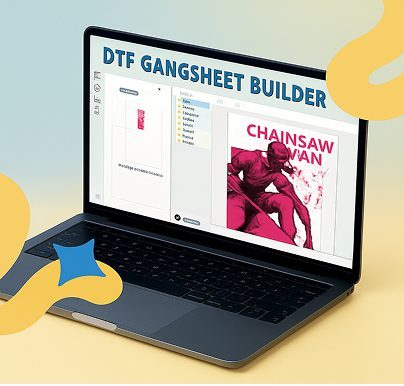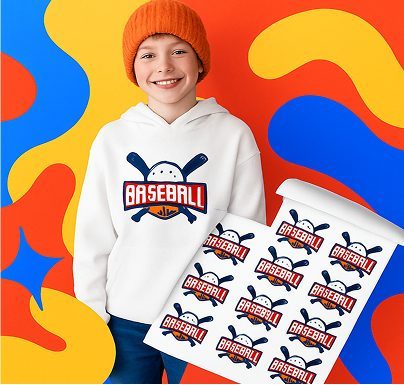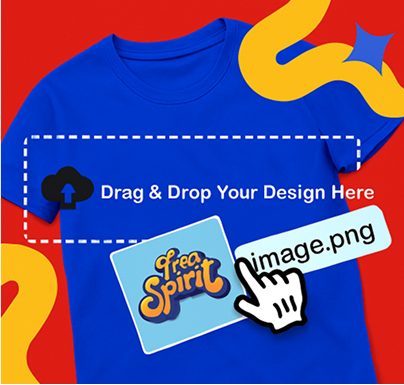Screen Printing vs. DTF Transfers: What’s Best for Your Brand?
Choosing between screen printing and DTF (Direct-to-Film) transfers shapes your apparel brand's look, feel, and profitability. Both methods create durable, high-quality prints, but they differ in setup, cost, production speed, and design flexibility.
Screen printing has long been the industry standard for bulk orders with simple designs, while DTF transfers offer vibrant, full-color prints with no minimums, perfect for detailed artwork and on-demand production. Understanding these differences helps you pick the process that aligns with your brand’s budget, turnaround needs, and creative vision.

What is Screen Printing?
Screen printing is a manual or semi-automated method where ink is pushed through mesh screens onto fabric. Each color in a design gets its screen, and ink is layered directly onto the material, creating a sharp and durable print. Because of its setup complexity, screen printing is best suited for larger batches of the same design.
How Screen Printing Works?
- Artwork Separation: The design is split into its individual colors.
- Screen Preparation: Mesh screens are coated with a light-sensitive emulsion and exposed with the artwork.
- Printing: Inks are manually or mechanically applied through each screen onto the garment.
- Curing: The printed shirt is cured in a dryer to lock in the ink.
Once the setup is done, screen printing produces hundreds of garments per hour, making it highly efficient for volume production.

Screen Printing: The Legacy
Technique Still Going Strong
Screen printing has been a cornerstone of custom apparel production for decades, prized for its ability to deliver bold, long-lasting designs. Using a mesh stencil, ink is applied directly to the fabric, creating rich, vibrant colors that can withstand repeated washing. This method excels with simple graphics, spot colors, and large bulk orders, making it a go-to choice for brands that produce consistent designs at scale.
Despite the rise of digital printing methods, screen printing remains popular because of its durability, tactile ink finish, and proven track record. Many brands rely on it for uniforms, promotional merchandise, and classic logo apparel. While it requires more setup time and is less flexible for small runs or intricate artwork, screen printing’s combination of quality and efficiency keeps it firmly in the spotlight for custom printing.
Why Screen Printing is Still Relevant
- It’s cost-efficient for high-volume production.
- The prints are extremely resistant to washing and wear.
- It creates a tactile, vibrant look that feels professional.
- It’s ideal for designs with solid colors and simple shapes
Screen printing delivers consistent, high-quality results, whether you’re producing shirts for a marathon, promotional giveaways, or team jerseys.
What are The Tools, Screens & Supplies in Screen Printing?
Successful screen printing depends on the right combination of equipment, quality materials, and proper maintenance. From preparing artwork to curing the final print, each tool plays a specific role in ensuring sharp, vibrant, and durable designs. The process centers around mesh screens and squeegees but also requires inks, emulsions, and curing equipment to deliver professional results.
- Screen Printing Press: Manual or automatic machines that hold screens in place for precise printing.
- Mesh Screens: Polyester or stainless-steel mesh stretched over a frame, coated with emulsion to form the stencil.
- Squeegees: Rubber-edged tools used to push ink evenly through the screen mesh onto the garment.
- Inks: Plastisol, water-based, or specialty inks selected based on fabric type and desired finish.
- Emulsion & Coating Tools: Light-sensitive liquid applied to screens to create the design stencil.
- Exposure Unit: Equipment that uses UV light to harden emulsion around the design areas.
- Curing Equipment: Conveyor or flash dryers that heat-set inks for durability and wash resistance.
- Cleaning Supplies: Screen cleaning chemicals, scrub brushes, and tape for screen preparation and maintenance.
What are The Screen Printing Limitations?
- It involves long setup times and multiple screens for multi-color designs.
- Best for orders of 25–1000+ units, not one-offs.
- Limited to flat surfaces and simple shapes.
- It doesn't handle gradients or photo-realism well.

DTF Transfer Printing: The Innovative Solution
DTF (Direct-to-Film) transfer printing is transforming custom apparel production with its ability to deliver full-color, high-resolution designs on virtually any fabric. Unlike traditional methods that require extensive setup or fabric-specific inks, DTF uses a printed film coated with adhesive powder, which is then heat-pressed onto the garment.
The DTF process enables detailed artwork, gradients, and vibrant colors without the limitations of screen counts or large minimum order quantities. For brands seeking flexibility, faster turnaround times, and on-demand printing capabilities, DTF transfers offer a modern, cost-effective alternative that meets the demands of today's market.
What is DTF?
DTF is a digital transfer method that prints artwork onto a special film using CMYK and white ink. The design is dusted with hot-melt adhesive powder, then heat-pressed onto garments. No screens. No delays. This technique is perfect for short runs, e-commerce brands, and designers testing multiple styles.
How DTF Works?
- Artwork Preparation: A high-resolution image is sent to a DTF-compatible printer.
- Film Printing: The design is printed in mirror format onto PET film.
- Adhesive Coating: A special powder is applied to the wet ink.
- Curing: The design is cured under heat to activate the adhesive.
- Transfer: The film is heat-pressed onto the fabric and peeled off.
You’re left with a soft, stretchable, high-definition image that holds up through wear and wash.
Why Dab DTF Recommends DTF Over Screen Printing?
We believe DTF is the future of custom apparel because:
- You don’t need to order in bulk. Want one hoodie? Done.
- Photo-quality prints are no problem. Show off every detail.
- Works on more than just cotton. Polyester, blends, even nylon? No issue.
- Unlimited colors. There’s no added cost for complex designs.
- Fast production. Get your custom designs in days, not weeks.
DTF gives you the speed and flexibility that screen printing can't match, whether you're running an Etsy store, building a clothing brand, or launching a merch line.
DTF vs. Screen Printing: A Full Comparison Table


When Should You Use Each Method?
Use Screen Printing When:
- You need 100+ shirts with the same design
- You have a simple, 1–3 color logo
- You're printing on cotton and want max durability
Use DTF Transfer When:
- You want full-color, detailed artwork
- You’re printing a small order (even one piece!)
- You want to test or rotate designs frequently
- You’re working with unusual fabrics
Conclusion: Screen Printing Is Solid, But DTF Is Smart
Screen printing remains a dependable choice for bulk orders and simple designs, but DTF transfers offer unmatched flexibility, speed, and detail for today’s custom apparel needs. For brands that value versatility and quick turnaround without sacrificing quality, DTF is the more innovative way forward. DTF matches the power of screen printing, and it surpasses it in many modern use cases.
We offer custom DTF prints for both individuals and businesses. Whether you're ordering 1 shirt or 500 transfers, you'll get:
- Crisp detail
- Bold colors
- Fast turnaround
- No setup hassle
Turn Ideas into Style with D&B DTF!
Design it Today, Wear it Tomorrow.

FAQs About Screen Printing vs. DTF Transfers
How fast can Dab DTF fulfill my order?
Most DTF orders are fulfilled within 1–3 business days, depending on volume.
Is DTF as durable as screen printing?
Yes, with proper washing (cold water, inside out), DTF prints can last as long as screen prints
Can I get DTF transfers and apply them myself?
Absolutely. Dab DTF offers printed transfers you can heat press at home or in your shop.
Does screen printing look more professional?
Not necessarily. DTF offers a sleek finish that can appear more modern, especially on synthetic fabrics.
Is DTF more expensive than screen printing?
Only for large orders. For 1–25 pieces, DTF is usually more affordable than screen printing due to lower setup costs.


